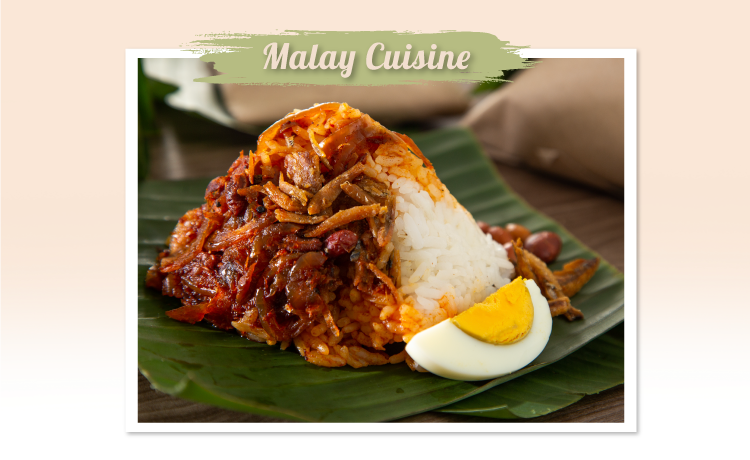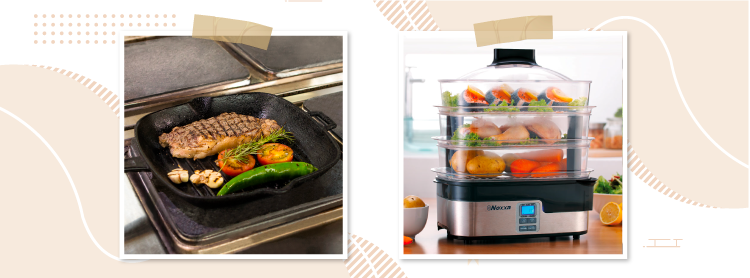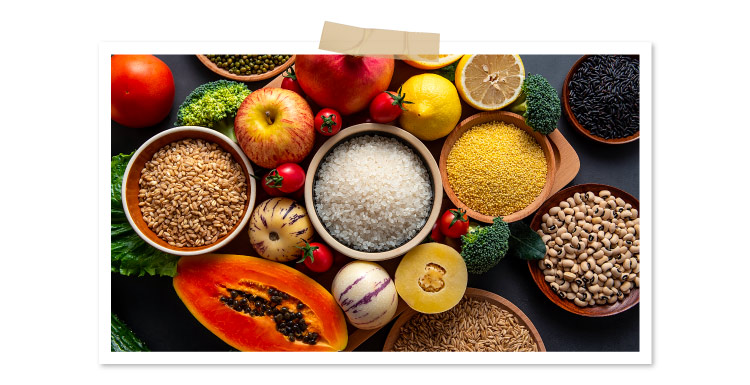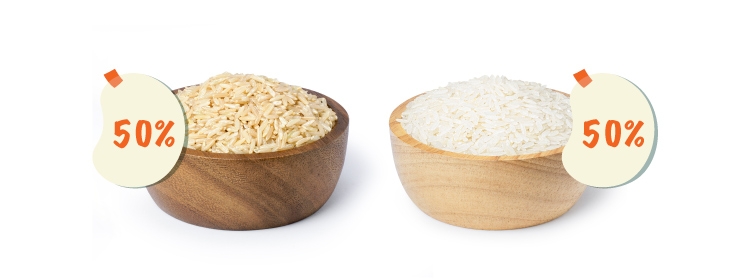
Malaysia offers a smorgasbord of tasty foods - from nasi lemak, rendang, laksa, satay, roti canai and more - that showcase our rich culture. Unfortunately though, our love for these delicious food and the typical Malaysian diet has given birth to an alarming rise in health issues among Malaysians including diabetes and obesity, among others.
Instead of completely denying the pleasures that some of these foods have to offer (yes, some of us really do live to eat), we should seriously consider how we can, to paraphrase a popular idiom, “have our cake and eat it too”, by opting for a healthier version of our favourite Malaysian dishes most of the time, as well as how we can adopt healthy eating habits.
In this 3-part series, we will examine how the 3 major communities in Malaysia – Malay, Chinese and Indian – can adopt a healthier diet. Let’s start by exploring Malay cuisine.

A Symphony of Flavours
Malay cuisine is known for its bold flavours, fragrant aromas and unique cooking methods, reflecting Malaysia’s lively culture and the diversity of its people’s diet. Key ingredients like love eating rice, coconut, belacan (shrimp paste) and rempah ratus (various herbs and spices) form the foundation of Malay cooking. Despite the diversity and personality that these dishes bring, it is essential to consider its health impact as well when consumed frequently.
As delicious as it is, traditional Malay cooking methods often involve ingredients high in saturated fat and calories such as coconut milk and palm oil, which when consumed often, can lead to multiple health issues such as obesity and heart diseases.

Can Malay Food Be Healthy?
Of course! We can start by implementing simple yet effective changes to the cooking method. Instead of frying, we can explore other alternatives such as grilling or steaming. For example, the traditional way of preparing ayam masak merah starts with deep-frying the chicken. Grilling or pan-cooking the chicken with minimal oil before adding it to the tantalising gravy is a healthier option.
Another delicious alternative is grilling or steaming fish wrapped in banana leaves, as is the method of preparation for otak-otak. Opting for stew-like dishes such as asam pedas and masak singgang to go with your rice or bread is also a flavourful and healthier choice, as they require less oil for cooking.

When using belacan, a crucial ingredient in Malay cuisine, it is advisable to avoid adding extra salt to the dish. Belacan is salty enough on its own and is best used as a substitute for added salt. This not only prevents the dish from tasting too salty but also reduces potential health risks from consuming excessive salt. The same rule applies when using ikan masin (salted fish) in your cooking too.

Increasing the consumption of fruits, vegetables and whole grains is crucial for maintaining good health. Consider, for example, the popular dish nasi goreng – enhancing its nutritional value can be as simple as adding vegetables like kangkung, cabbage, carrots, mushrooms and corn.

When cooking rice, consider substituting 50% of the white rice with brown rice or barley to introduce more fibre, which aids in weight management and cholesterol control. If portion control is where your discipline wavers, go for nasi himpit, in which the rice has been compressed and cut into bite-size squares for aesthetic value and more importantly, calorie-counting convenience.
When enjoying nasi campur, prioritise vegetables by filling half your plate with them, and consider incorporating fresh raw vegetables such as cucumber, winged beans and cauliflower. If you’re feeling adventurous, reach for the raw green leaves (ulam) traditionally favoured by the Malay community: daun sambung nyawa, daun belalai gajah, daun tenggek burung, daun bebuas and ulam raja all boast a wealth of health benefits.
With a myriad of unique flavours, these ulam not only enhance the nutritional value of your meal with vital vitamins, minerals and antioxidants, but can even boost brain health and contribute to a well-balanced and healthy dining experience.
When it comes to fruit consumption, enjoy it as part of your meal or as a snack between meals, aiming for 2-3 servings a day. While banana fritters (pisang goreng) can be a delightful treat, it is wise to indulge occasionally rather than daily.
Also, when relishing fruits, minimise (or avoid altogether) the use of asam boi, soy sauce, or rojak sauce to reduce sodium intake. Following these practices ensures that your fruit consumption remains a wholesome and health-conscious part of your daily routine.
In Summary
Achieving a healthier lifestyle in Malaysia involves making small yet impactful changes to our eating habits and diet. Moderation is a key part of Malay values, and balancing the richness of the Malay culture with a mindful approach to ingredients and cooking methods is the foundation of a nutritious and balanced diet. Ready to make a change? Check out this recipe for air-fried ayam goreng berempah.
And remember to check out the next article in this series! We will delve into the eating habits of the Chinese and Indian communities diet in Malaysia and discover how to have healthy eating habits and eat healthier. Together, let’s make Malaysia a healthier and happier place, where all our different flavours mix together for a really good and happy life!
Reference
This article is contributed by
Georgen Thye, Consultant Dietitian
BSc. (Hons.) Nutrition and Dietetics, IMU
Council Member of the Malaysian Dietitians' Association (2021-2023)